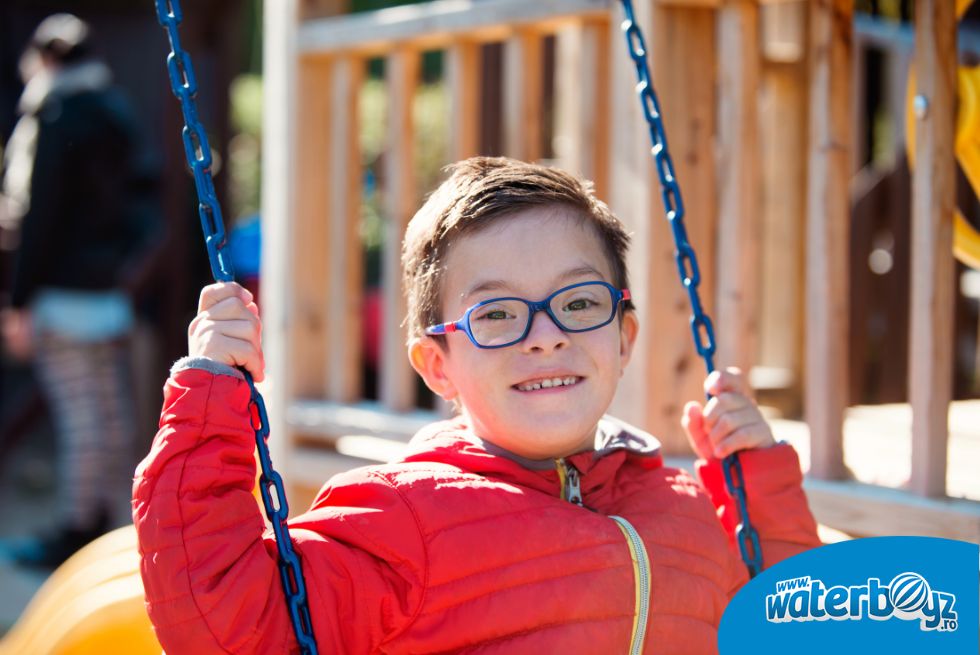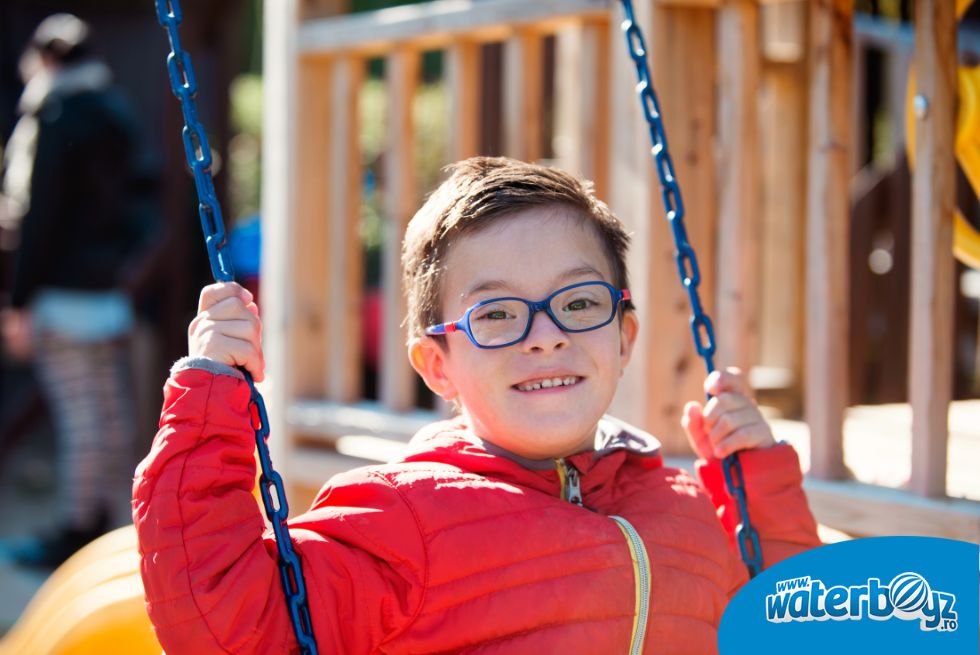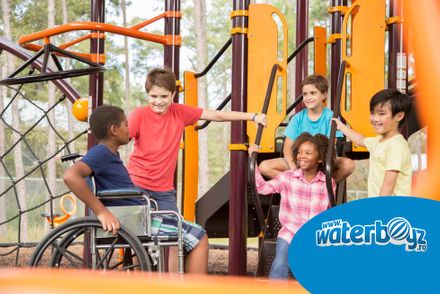Access to an inclusive playground brings all members of a community closer to each other. With the help of special outdoor activity equipment, individuals with psychomotor difficulties can enjoy leisure time with their loved ones in a safe and environmentally friendly space tailored to specific needs.
Social inclusion is the foundation for the sustainable development of a strong and well-being-oriented community. Here is more useful information about the benefits of setting up such a playground, as well as the characteristics of a space that includes equipment for everyone, from small to large:
1. Benefits of inclusive playgrounds for the community
Areas that include equipment for people with disabilities allow active participation of all children, regardless of their psychomotor abilities. Thus, children have access to an environment where they can interact with each other and enjoy play together. The establishment of an inclusive playground supports overcoming social barriers based on certain prejudices, promoting empathy and socialization instead.
Playgrounds accessible to all send a powerful message about equality and human rights. They emphasize that every child has the right to a happy childhood. Setting up such play and recreation spaces promotes moral values such as respect and acceptance, allowing new generations to build a more inclusive society together.
Using special equipment designed for everyone, children and adults can engage in common activities in a conducive environment for leisure time, accepting to learn from each other and build stronger relationships. These spaces become meeting points for community members, where families get to know and support each other.
Setting up an outdoor fitness park, including equipment for people with disabilities, has numerous benefits for physical and mental health. Specific activities contribute to improving coordination, strength, flexibility, and balance. Additionally, outdoor play reduces stress and anxiety, improves mood, and boosts self-esteem. Therefore, playgrounds accessible to all provide a safe and stimulating environment, regardless of individual needs.


2. Defining aspects for the concept of social inclusion
For a playground located in the heart of the community to be considered "inclusive," the following 3 key points must be considered during the design phase:
2.1. Importance of sensory stimulation
The playground must include equipment that stimulates auditory, tactile, or visual senses during play. Additionally, solutions integrated into the area should develop and stimulate the basic functions of the proprioceptive system.
2.2. Securing the area
The entire area must enjoy a high level of safety. The ground surface should have a poured rubber pavement for efficient shock absorption. Due to its low density, poured rubber covers surfaces optimally, providing a solid and comfortable base for physical activities.
Adults should closely supervise children, especially those with mobility issues or cognitive disorders. For children with autism, enclosing the perimeter is beneficial for their perception of the safety provided by the space they are in.
2.3. Integration of equipment into space
The space should be airy enough to allow easy movement for people with disabilities in wheelchairs. Furthermore, installing a variety of equipment, dedicated to children with different health issues, alongside other outdoor equipment, stimulates social interaction and acceptance.
3. Understanding special needs in an inclusive playground
Understanding the needs of people with disabilities is essential to create an accessible playground for all. There are different pathologies that make up this complex spectrum: physical, sensory, intellectual, and psychological. Each of these involves specific needs, so it is advisable to carefully analyze them to better understand the importance of certain inclusive play and fitness solutions:
3.1. Autism
People with autism may either seek or avoid sensory experiences. They may also have difficulties in maintaining postural balance or spatial localization (in the case of sensory processing disorders). They are also prone to avoiding socialization, so play and fitness equipment specially designed for them should allow interaction with others and stimulate various senses through structural elements.
3.2. Spina Bifida
Individuals diagnosed with spina bifida need a wheelchair to enjoy activities in an inclusive playground, which may include fitness equipment for people with disabilities. They may also encounter difficulties in non-verbal learning processing. Therefore, play equipment should stimulate analytical thinking, attention to detail, and the creativity of children. Additionally, solutions that can stimulate the upper body and fine motor functions are essential.
3.3. Cerebral Palsy
Cerebral palsy is a neurological condition manifested by accelerated deterioration of neural connections, affecting muscle tone, gross and fine motor functions, balance, reflexes, and posture. Additionally, intellectual disability is observed in about two-thirds of diagnosed children.
Cerebral palsy can manifest differently from one patient to another, affecting one or more limbs (lower or upper) and even the face. Children with this health problem may need inclusive equipment with integrated wheelchairs or other postural support solutions. Moreover, equipment that stimulates socialization and sensory skills is highly recommended.
3.4. Down Syndrome
Down syndrome is a genetic disorder that causes delays in physical and intellectual development. Individuals diagnosed with this syndrome have a low level of physical strength and low muscle tone, making them prone to developing cardiovascular diseases due to a high percentage of body fat.
Therefore, it is recommended to set up an inclusive playground with equipment that stimulates physical effort, adapted to the cognitive abilities specific to a child with Down syndrome. Supportive and gripping elements that ensure postural support are also recommended.
3.5. ADHD (Attention Deficit Hyperactivity Disorder)
Children with ADHD are easily distracted by images or sounds. Concentrating on a task or a specific type of activity is challenging for them. Listening skills are underdeveloped, and they may show heightened impulsivity when interacting with other children at the playground. However, they tend to have an extremely rich imagination for their age.
Therefore, the best playgrounds for children with ADHD are outdoor spaces, preferably close to nature. Park spaces or playground equipment for young children that allow for a high level of energy consumption are recommended for the planning of a playground for children with hyperactivity and attention deficit.
3.6. Vision Problems
Eye disorders that can cause visual impairments include macular degeneration, albinism, cataracts, glaucoma, muscle dystrophies leading to visual problems, corneal disorders, diabetic retinopathy, congenital disorders, or infections. Children with visual impairments need an inclusive playground where equipment plays a fundamental role in sensory stimulation, arranged on a single level, and equipped with a high number of safety elements.
Take all these pieces of information into account and set up an inclusive playground with the help of Waterboyz specialists! For more inspiration, explore the entire range of equipment adapted for social inclusion. Read product information carefully to make the best decisions for the space you want to create!




































































































































